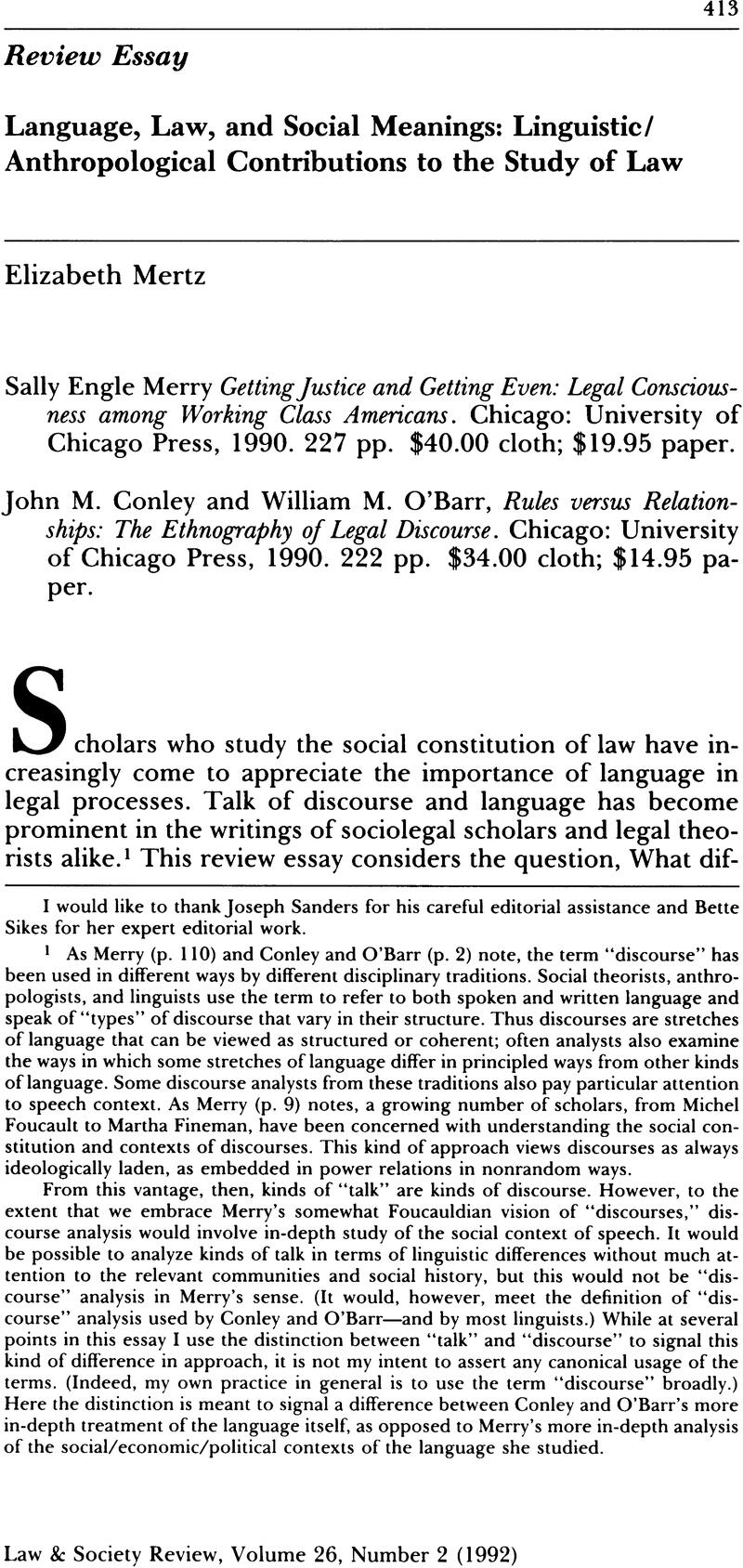Crossref Citations
This article has been cited by the following publications. This list is generated based on data provided by
Crossref.
Culhane, Dara
1995.
Justice and healing: Aboriginal peoples in Canada.
The Journal of Human Justice,
Vol. 6,
Issue. 2,
p.
140.
Brommer, Stephanie J.
1997.
The Legal Liminality Of Battered Women Who Kill Their Abusers.
PoLAR: Political and Legal Anthropology Review,
Vol. 20,
Issue. 2,
p.
16.
Feldman, Alice
2000.
Othering Knowledge and Unknowing Law: Oppositional Narratives in the Struggle for American Indian Religious Freedom.
Social & Legal Studies,
Vol. 9,
Issue. 4,
p.
557.
Gooding, Susan Staiger
and
Darian‐Smith, Eve
2001.
Introduction to the Symposium.
PoLAR: Political and Legal Anthropology Review,
Vol. 24,
Issue. 2,
p.
1.
Rosenthal, Judy
2002.
Ethnography in Unstable Places.
p.
316.
Parnell, Phillip C.
2002.
Ethnography in Unstable Places.
p.
146.
Freeman, James M.
and
Nguyen, Dinh Huu
2002.
Ethnography in Unstable Places.
p.
210.
Darian-Smith, Eve
2002.
Ethnography in Unstable Places.
p.
249.
Greenhouse, Carol J.
2002.
Ethnography in Unstable Places.
p.
1.
Zabusky, Stacia E.
2002.
Ethnography in Unstable Places.
p.
113.
Ries, Nancy
2002.
Ethnography in Unstable Places.
p.
276.
Lewin, Carroll McC.
2002.
Ethnography in Unstable Places.
p.
37.
Faier, Elizabeth
2002.
Ethnography in Unstable Places.
p.
178.
Mertz, Elizabeth
2002.
Ethnography in Unstable Places.
p.
355.
Warren, Kay B.
2002.
Ethnography in Unstable Places.
p.
379.
2002.
Ethnography in Unstable Places.
p.
395.
De Nike, Howard J.
2002.
Ethnography in Unstable Places.
p.
85.
Gordon, Robert J.
2002.
Ethnography in Unstable Places.
p.
61.
Pollock, Mica
2004.
Race Wrestling: Struggling Strategically with Race in Educational Practice and Research.
American Journal of Education,
Vol. 111,
Issue. 1,
p.
25.
Richman, Kimberly D.
2005.
(When) Are Rights Wrong? Rights Discourses and Indeterminacy in Gay and Lesbian Parents'Custody Cases.
Law <html_ent glyph="@amp;" ascii="&"/> Social Inquiry,
Vol. 30,
Issue. 1,
p.
137.





